It looks like you're using an Ad Blocker.
Please white-list or disable AboveTopSecret.com in your ad-blocking tool.
Thank you.
Some features of ATS will be disabled while you continue to use an ad-blocker.
share:
A relatively hard to find book about sighting of UFOs by pilots is now available online. The relevant book is“On Pilots and UFOs” (1997) by Dr
Willy Smith.
I have made a scan of that book and uploaded it on the Internet as a PDF file at the link below, with the generous permission of Willy Smith’s widow, Terry Long:
min.us...
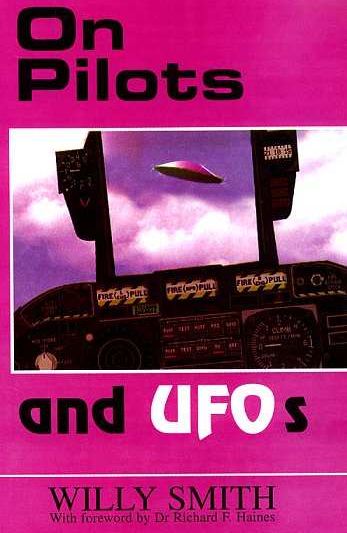
I would like to express my appreciation of Terry Long’s willingness to make the book available without any charge. If there are many comments in this thread upon Willy Smith’s book or Terry Long’s willingness to make it freely available, I will send her a link so that she can read your comments.
For those not very familiar with Willy Smith’s name, he worked with J Allen Hynek on the “UNICAT” Project. Here are some notes about the author from Dr Willy Smith’s book:

Since copies of Willy Smith’s book are not exactly easy to find, I hope that making this book freely available online may be useful to some members of the UFO community.
In recent months I've recently been in touch with Willy Smith's widow, Terry Long, in relation to various issues and she has been extremely helpful in her responses. In particular, she kindly gave me permission to scan Willy Smith's book on pilot UFO sightings with a view to making the book (to which she holds the copyright) available to others for free. In fact, she generously sent me two copies of the book without being prepared to accept any payment for them.
I've also been in touch with Dr Richard Haines and he promptly indicated that he is happy for me to make his foreword available with the rest of the book. As many of you probably know, Dr Haines is one of the leaders of NARCAP, i.e. the National Aviation Reporting Center on Anomalous Phenomena), which was founded to “to establish a
completely confidential reporting center for pilots, radar operators, and air traffic controllers using a toll-free phone number and by other means”.
The title of the book is fairly self-explanatory, but I’ll just give a brief overview and a few links to additional information on the case studies in Willy Smith’s book.
For ease of linking, I’ve posted the brief overview of each chapter as a separate post below. The chapters in Willy Smith’s book are:
Chapter 1: Fort Monmouth, New Jersey, 10 September 1951
Chapter 2: Yakima, Washington, March 1952
Chapter 3: Shreveport, Louisiana, 16 April 1952
Chapter 4: Greenville, South Carolina, 13 May 1952
Chapter 5: Anchorage, Alaska, 16 February 1953
Chapter 6: Kinross, Michigan, 23 November 1953
Chapter 7: Seven Islands, Labrador, 29 June 1954
Chapter 8: Tonopah, Nevada, 22 November 1957
Chapter 9: Over Pennsylvania (Captain Killian’s case), 24 February 1959
Chapter 10: Valencia, Spain, 26 September 1973
I have made a scan of that book and uploaded it on the Internet as a PDF file at the link below, with the generous permission of Willy Smith’s widow, Terry Long:
min.us...

I would like to express my appreciation of Terry Long’s willingness to make the book available without any charge. If there are many comments in this thread upon Willy Smith’s book or Terry Long’s willingness to make it freely available, I will send her a link so that she can read your comments.
For those not very familiar with Willy Smith’s name, he worked with J Allen Hynek on the “UNICAT” Project. Here are some notes about the author from Dr Willy Smith’s book:

Since copies of Willy Smith’s book are not exactly easy to find, I hope that making this book freely available online may be useful to some members of the UFO community.
In recent months I've recently been in touch with Willy Smith's widow, Terry Long, in relation to various issues and she has been extremely helpful in her responses. In particular, she kindly gave me permission to scan Willy Smith's book on pilot UFO sightings with a view to making the book (to which she holds the copyright) available to others for free. In fact, she generously sent me two copies of the book without being prepared to accept any payment for them.
I've also been in touch with Dr Richard Haines and he promptly indicated that he is happy for me to make his foreword available with the rest of the book. As many of you probably know, Dr Haines is one of the leaders of NARCAP, i.e. the National Aviation Reporting Center on Anomalous Phenomena), which was founded to “to establish a
completely confidential reporting center for pilots, radar operators, and air traffic controllers using a toll-free phone number and by other means”.
The title of the book is fairly self-explanatory, but I’ll just give a brief overview and a few links to additional information on the case studies in Willy Smith’s book.
For ease of linking, I’ve posted the brief overview of each chapter as a separate post below. The chapters in Willy Smith’s book are:
Chapter 1: Fort Monmouth, New Jersey, 10 September 1951
Chapter 2: Yakima, Washington, March 1952
Chapter 3: Shreveport, Louisiana, 16 April 1952
Chapter 4: Greenville, South Carolina, 13 May 1952
Chapter 5: Anchorage, Alaska, 16 February 1953
Chapter 6: Kinross, Michigan, 23 November 1953
Chapter 7: Seven Islands, Labrador, 29 June 1954
Chapter 8: Tonopah, Nevada, 22 November 1957
Chapter 9: Over Pennsylvania (Captain Killian’s case), 24 February 1959
Chapter 10: Valencia, Spain, 26 September 1973
edit on 1-3-2012 by IsaacKoi because: (no reason given)
Chapter 1: Fort Monmouth, New Jersey, 10 September 1951
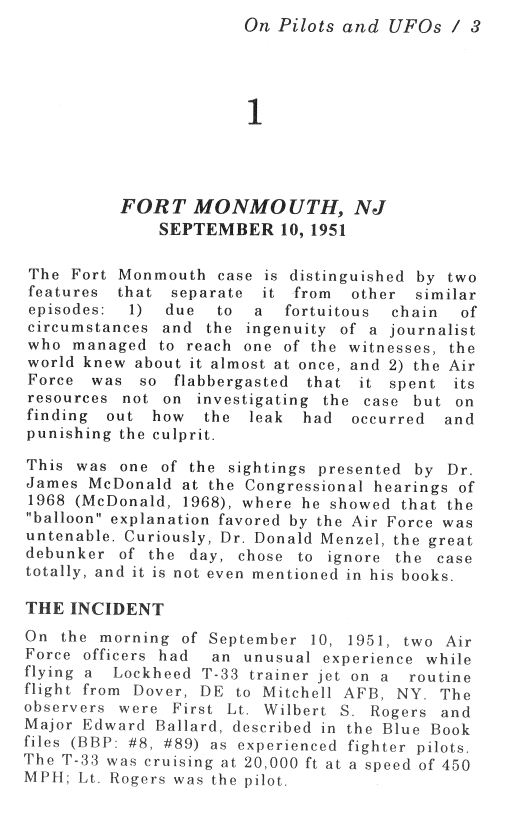
Wikipedia includes the following in relation to this incident:
en.wikipedia.org...
On September 10, 1951, there was a radar/visual UFO encounter near Fort Monmouth in New Jersey. Pilots and radar operators reported encounters with a number of fast-moving, highly maneuverable disc-shaped aircraft. High-ranking personnel ordered an investigation, and Cummings and Lt. Colonel N.R. Rosegarten spent most of 13 September interviewing witnesses and gathering documentation at Ft. Monmouth.
The duo were then ordered to relate the results of their investigation directly to Major General Charles P. Cabell, then the head of Air Force intelligence at the Pentagon. Cummings and Rosegarten arrived at a meeting already in progress, and found the atmosphere thick with tension. Cabell in particular was distressed by what he saw as the sloppy debunking and lackadaisical attitude Project Grudge brought to bear on a subject he thought deserved serious scrutiny. Cummings and Rosegarten related their conclusions of the Fort Monmouth incident: they agreed with Monmouth personnel who judged the fast moving objects sighted there as being "intelligently controlled." (Clark, 240)
When given permission to speak freely to Cabell and the others, Cummings (as Ruppelt wrote) "cut loose. He told how every UFO report [submitted to Grudge] was taken as a huge joke" and Grudge had become all but moribund. (Clark, 240)
When General Charles P. Cabell learned that Grudge had essentially ignored UFO reports, he became furious. The Fort Monmouth case had highlighted what critics saw as Air Material Command's sloppy debunking, and at a meeting, a frustrated Cabell was reported to have said, "I want an open mind; in fact, I order an open mind! Anyone who doesn't keep an open mind can get out now! ... Why do I have to stir up the action? Anyone can see that we do not have a satisfactory answer to the saucer question." (Swords, p. 103)
Karl12 wrote a thread about this incident on ATS at the link below:
www.abovetopsecret.com...
Francis Ridge’s “NICAP” website has a summary of this case and numerous links, including to various press clippings and other material:
www.nicap.org...
This incident is also discussed in quite a few UFO books. A list I compiled of over 20 such books is included in a table (which can be sorted by author’s name, date of publication or length of discussion) on my draft website at:
www.isaackoi.com...
A high resolution copy of the US Air Force’s Project Blue Book 87 page file on this incident can be found on the Fold3 website at the link below:
www.fold3.com...
A sample page (page 2 of the file) is shown below:
www.fold3.com...
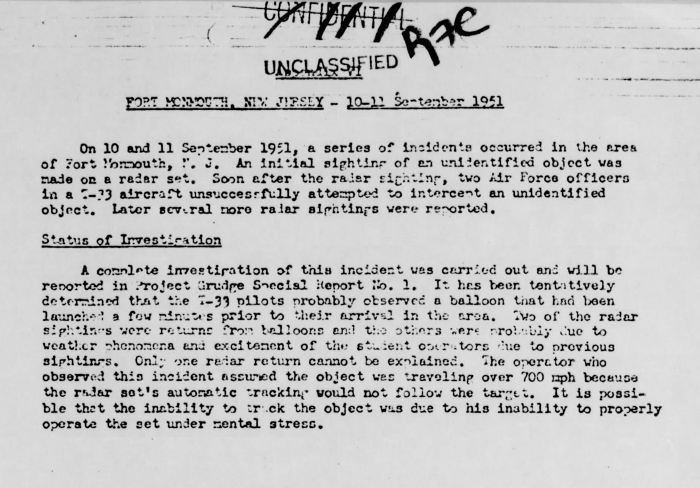
Here is Page 27 of the file:
www.fold3.com...
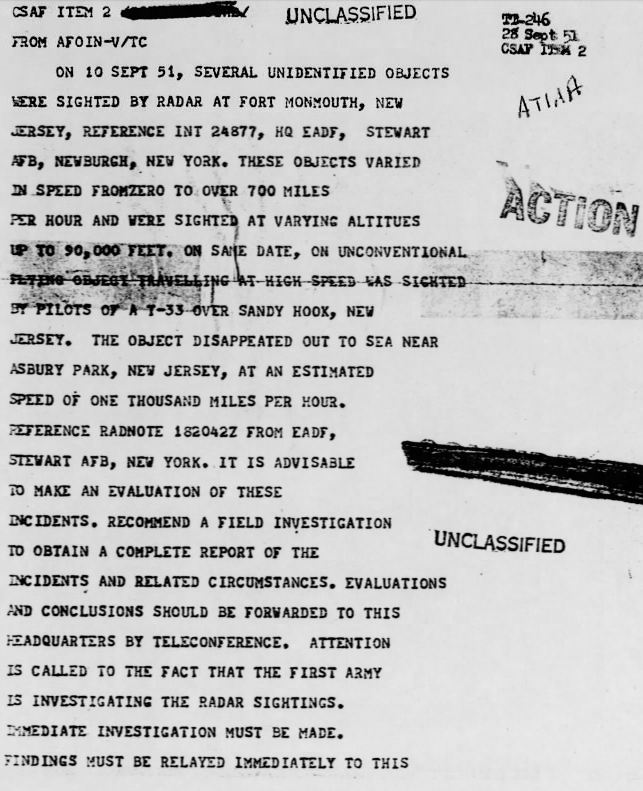
Here is the Air Force conclusion (criticised by, among others, Willy Smith in the relevant chapter of his book and by Brad Sparks in an item entitled “Analysis Proves T-33 Was Not Chasing A Balloon”) from Page 1 of the file:
www.fold3.com...
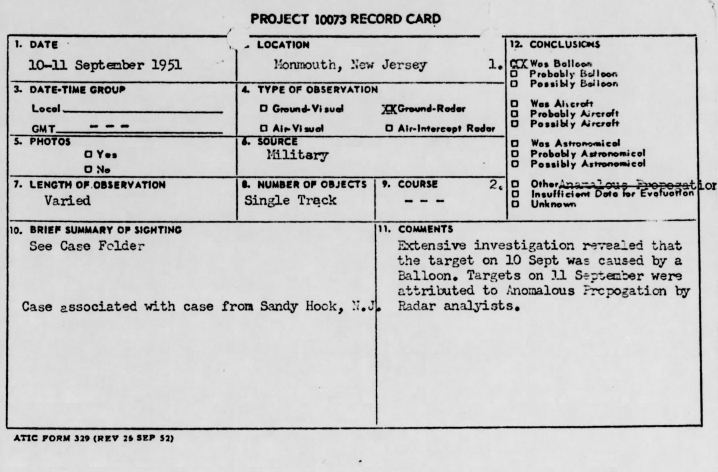
A lower resolution (but, notably, unredacted) copy of the Project Blue Book documents for this incident are on the bluebookrachive.org website within the directory which begins at the link below:
bluebookarchive.org...
To illustrate what I mean by “unredacted”, here is one page (Page 37) from the redacted file from the Fold3 website:
www.fold3.com...
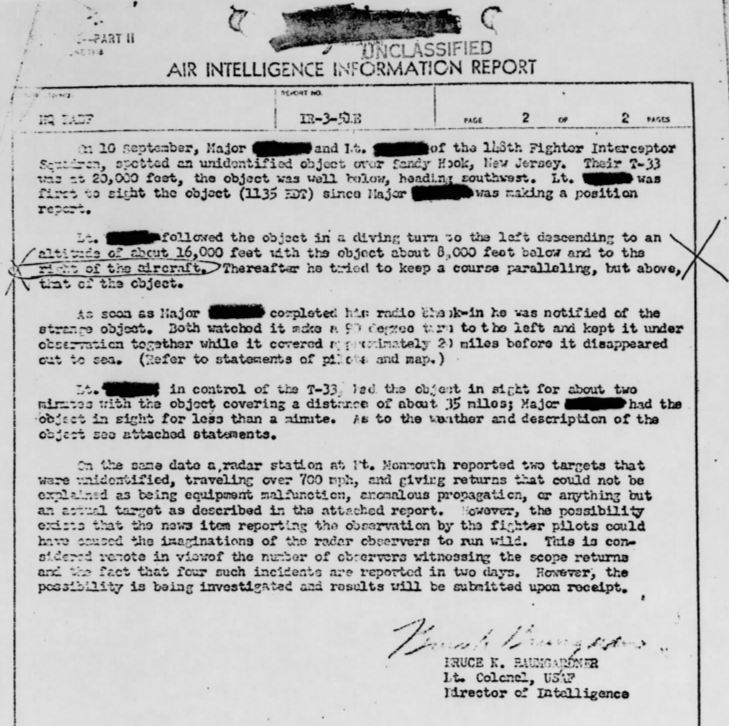
and here is the same page in unredacted form from the bluebookarchive.org website:
bluebookarchive.org...
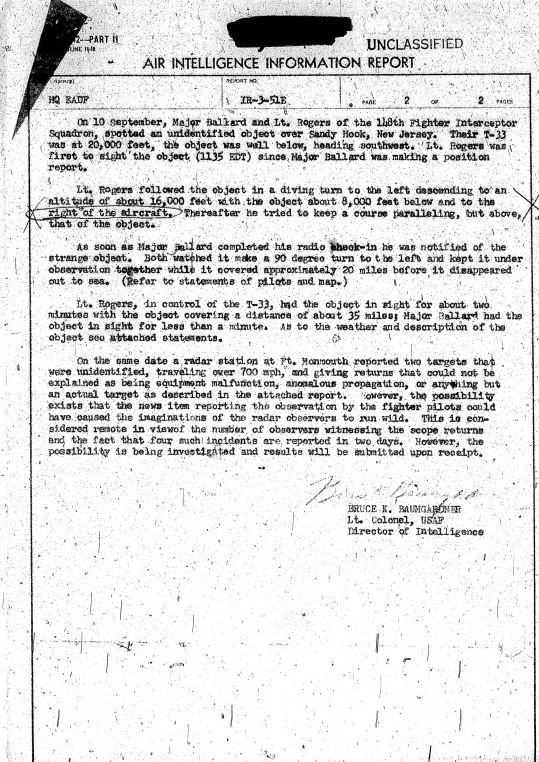
James E McDonald discussed this incident in his prepared statement to the Roush Hearing (the U.S. House of Representatives Committee on Science and Astronautics "Symposium on Unidentified Flying Objects" on 29 July 1968) as Case 31 at page 66 of the transcript of the Ninetieth Congress, Second Session, Number 7. The complete transcript of that hearing is available free online at the following links:
www.project1947.com...
McDonald’s evidence to the Roush Hearing included the following:
www.project1947.com...
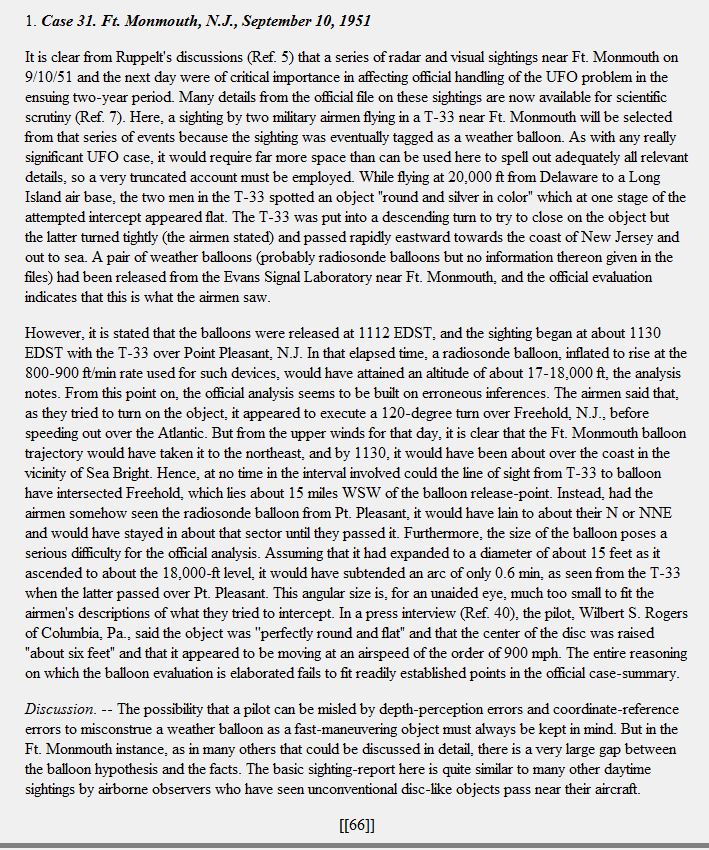
edit on 1-3-2012 by IsaacKoi because: (no reason given)
Chapter 2: Yakima, Washington, March 1952

A high resolution copy of the US Air Force’s Project Blue Book file on this incident can be found on the Fold3 website beginning at the link below:
www.fold3.com...
Here is one of the pages from that file:
www.fold3.com...
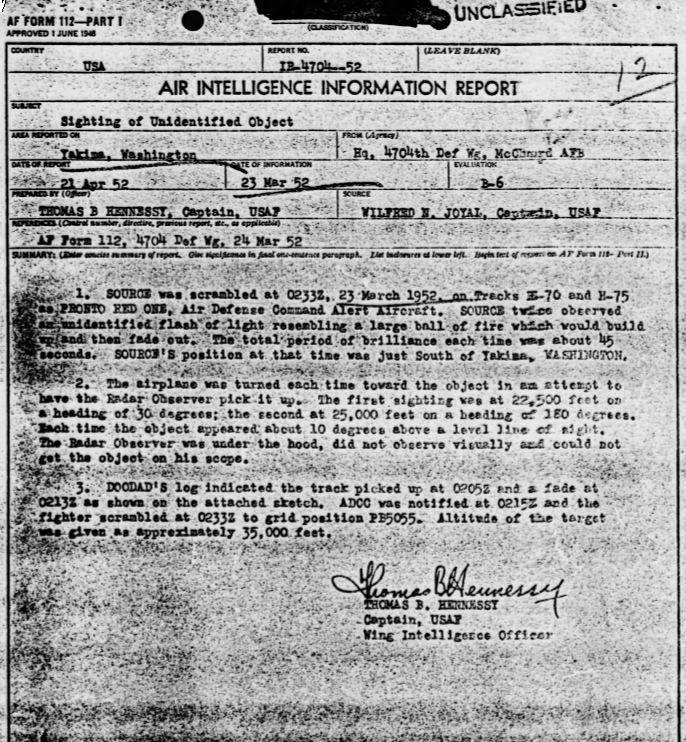
A lower resolution (but, notably, unredacted) copy of the Project Blue Book documents for this incident are on the bluebookrachive.org website within the directory which begins at the link below:
bluebookarchive.org...
Francis Ridge’s “NICAP” website has a brief entry in relation to this incident at the link below:
www.nicap.org...
Chapter 3: Shreveport, Louisiana, 16 April 1952
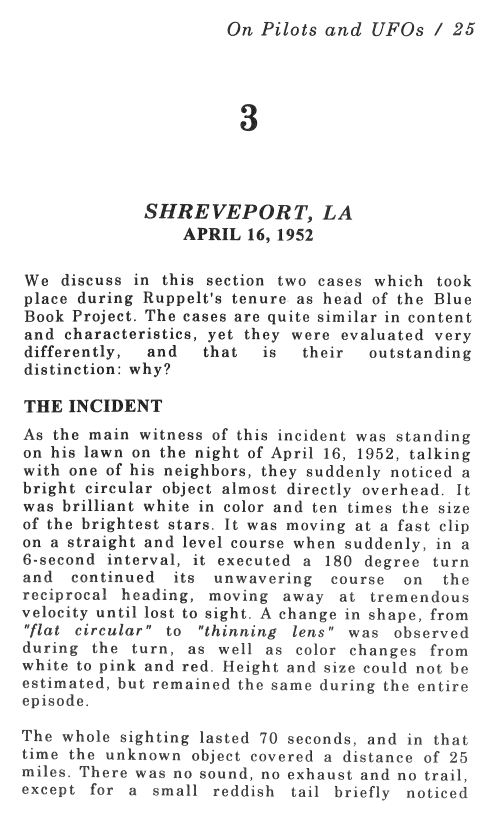
A high resolution copy of the US Air Force’s Project Blue Book file on this incident can be found on the Fold3 website beginning at the link below:
www.fold3.com...
Here is the summary record card for that incident. Note that while the brief summary on that page concludes “doubtful if this was a balloon”, but the case is classified (as indicated by the box ticked on the top right of the same page, as “Possibly Balloon”.
www.fold3.com...
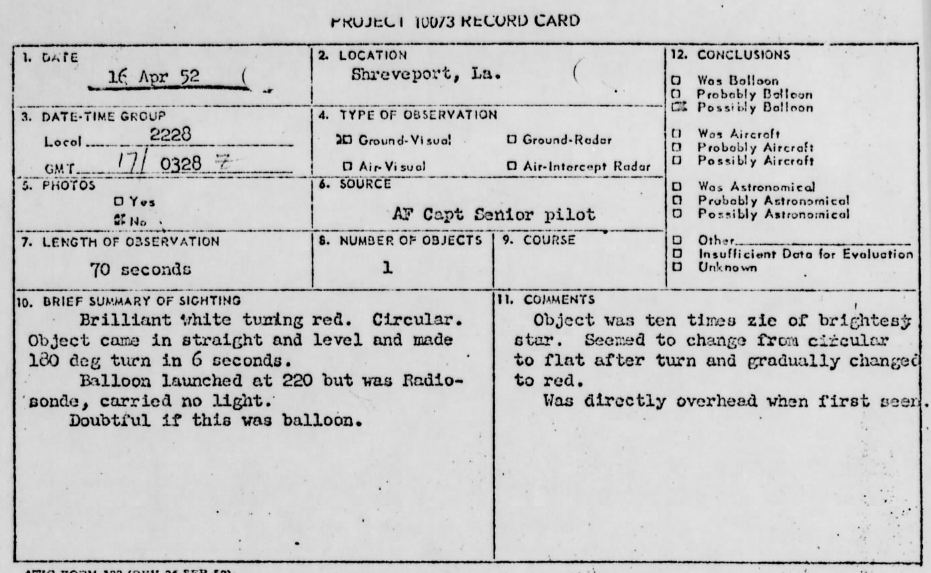
A lower resolution (but, notably, unredacted) copy of the Project Blue Book documents for this incident are on the bluebookrachive.org website within the directory which begins at the link below:
bluebookarchive.org...
Here is one of the pages from the unredacted copy of the relevant file:
bluebookarchive.org...

edit on 1-3-2012 by IsaacKoi because: (no reason given)
Chapter 4: Greenville, South Carolina, 13 May 1952

A high resolution copy of the US Air Force’s Project Blue Book file on this incident can be found on the Fold3 website at the link below:
www.fold3.com...
Here is the summary record card for this incident:
www.fold3.com...
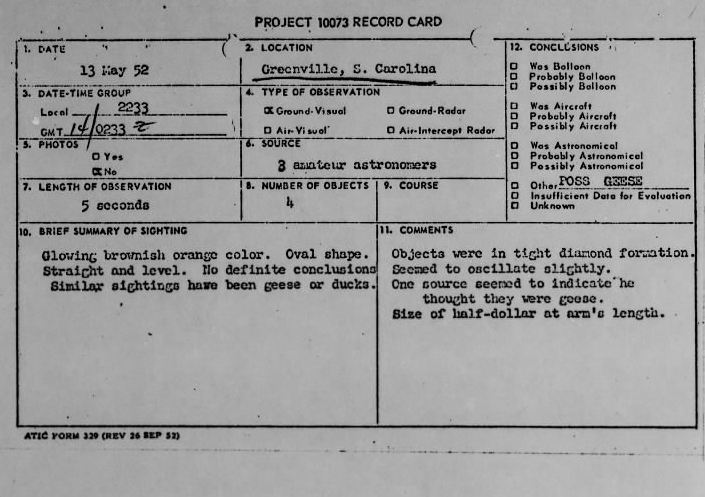
Here is a sample page from the file:
www.fold3.com...
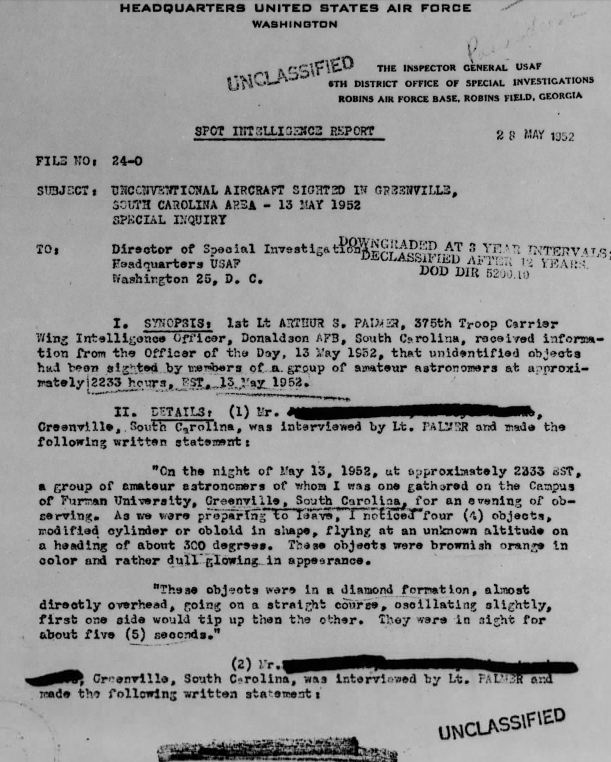
A lower resolution (but, notably, unredacted) copy of the Project Blue Book documents for this incident are on the bluebookrachive.org website within the directory which begins at the link below:
bluebookarchive.org...
edit on 1-3-2012 by IsaacKoi because: (no reason given)
Chapter 5: Anchorage, Alaska, 16 February 1953
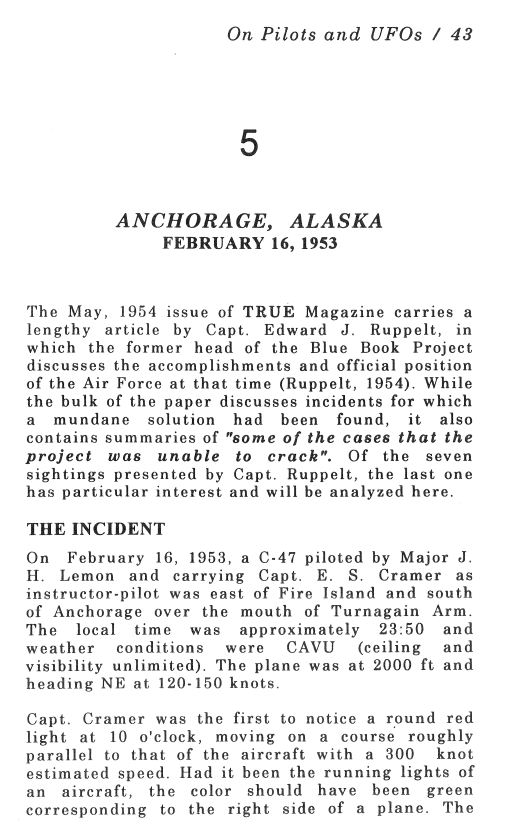
A high resolution copy of the US Air Force’s Project Blue Book file on this incident can be found on the Fold3 website at the link below:
www.fold3.com...
Here is the summary record card for this incident:
www.fold3.com...
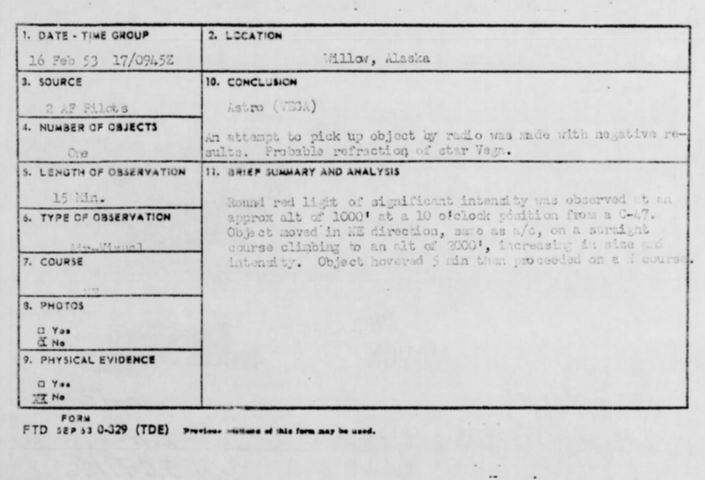
Here is a sample page from the file:
www.fold3.com...
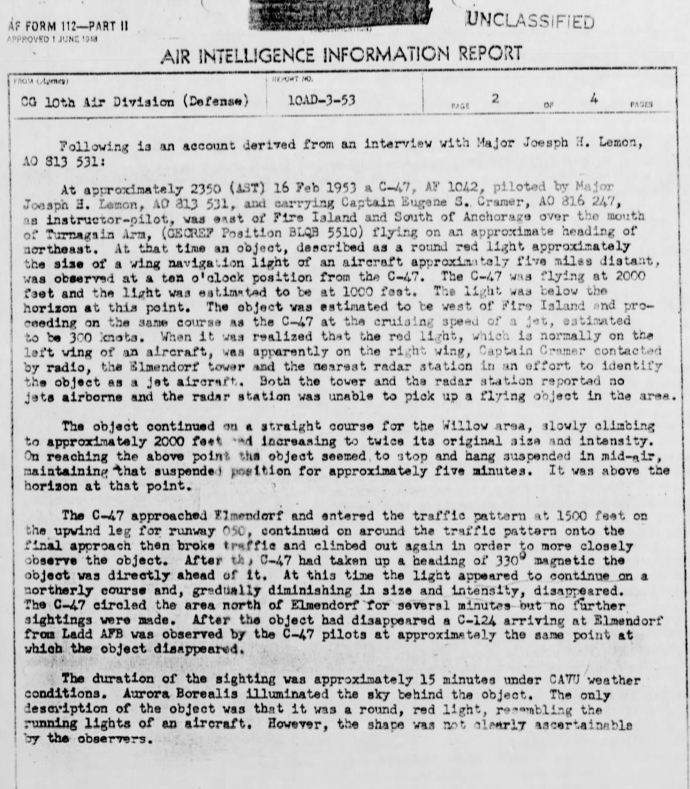
See also the file in relation to an incident the following night at:
www.fold3.com...
edit on 1-3-2012 by IsaacKoi because: (no reason given)
Chapter 6: Kinross, Michigan, 23 November 1953
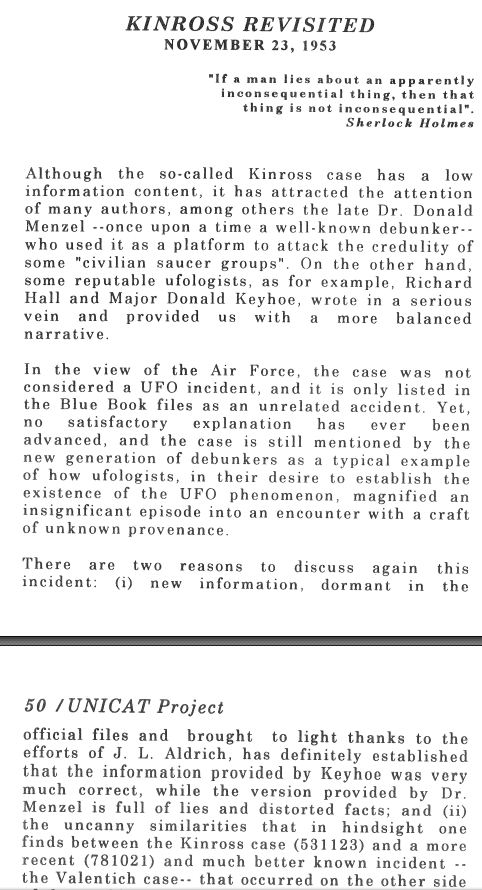
Wikipedia has an entry in relation to this incident, which includes the following:
en.wikipedia.org...
First Lieutenant Felix Eugene Moncla, Jr. (October 21, 1926 – presumably died November 23, 1953) was a United States Air Force pilot who mysteriously disappeared while pursuing an unidentified flying object over Lake Superior in 1953. This is sometimes known as The Kinross Incident, after Kinross Air Force Base, where Moncla was on temporary assignment when he disappeared.
The U.S. Air Force reported that Moncla had crashed and that the "unknown" object was a misidentified Royal Canadian Air Force aircraft.
On multiple occasions, the RCAF refuted their involvement in the intercept, in correspondence with members of the public asking for further details on the intercept.
There is a thread in relation to this incident on ATS entitled “The Kinross Incident” started by Gazrok in 2005 and also a more recent thread entitled Kinross Ufo crash..could it still be there??
There are also several videos online summarising information relating to this incident, including this one:
[yvid]7amPIIDJvPE[/yvid[
This incident is also discussed in numerous UFO books. A list I compiled of over 50 such books is included in a table (which can be sorted by author’s name, date of publication or length of discussion) on my draft website at the link below:
www.isaackoi.com...
Chapter 7: Seven Islands, Labrador, 29 June 1954
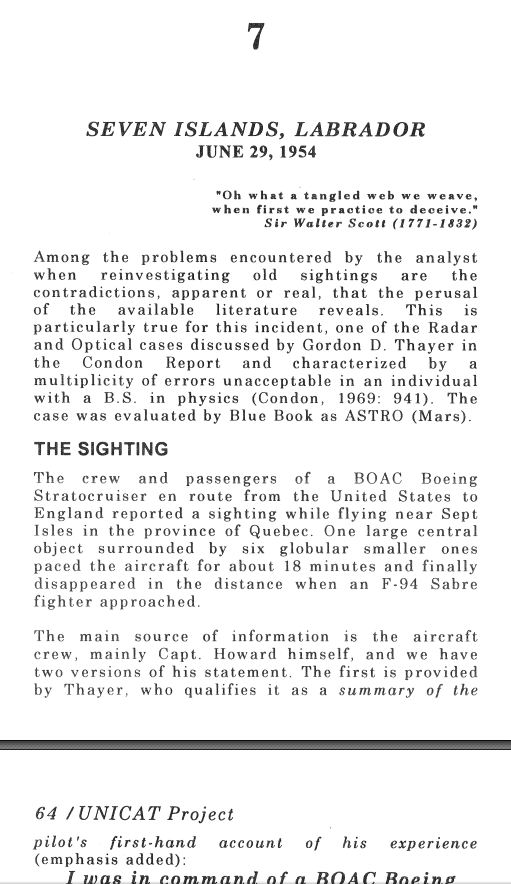
On 29 June 1954, the British Overseas Airways Corporation (“B.O.A.C.” or “BOAC”) stratocruiser “Centaurus” sighting occurred near Goose Bay, Labrador during a flight fromNew York’s Idlewild Airport to London, involving pilot Captain James Howard and co-pilot Lee Boyd. (Commonly referred to as “the BOAC stratocruiser sighting”.)
This case featured in a list of 5 cases which APRO nominated as being the best in a survey in 1965 by Jacques Vallee.
This incident is also discussed in quite a few UFO books. A list I compiled of over 50 such books is included in a table (which can be sorted by author’s name, date of publication or length of discussion) on my draft website at:
www.isaackoi.com...
A thread on ATS entitled “UFO-Aircraft Encounters: The BOAC Stratocruiser Incident and The “B-29 Gulf of Mexico Incident”” by Jkrog08 includes a discussion of this incident.
Francis Ridge’s “NICAP” website has a summary of this case and numerous links, including to various commentaries and other material:
www.nicap.org...
Numerous other websites include discussions of this incident. Particularly noteworthy is the detailed discussions by Martin Shough in a 78 page PDF document entitled “Study of an Unusual Phenomenon Observed by BOAC Aircrew over Labrador, Newfoundland June 29, 1954” which can be downloaded at the link below:
martinshough.com...
That document concludes:
In most respects it seems possible to explain this sighting satisfactorily - if not conclusively - as an unusual mirage. Some of the difficulties with the mirage theory - such as those discussed in the Condon Report by Thayer in 1970 - can probably be overcome, as Thayer today agrees. 88 And thanks to the Australian Zanthus case (which occurred on the other side of the world even as the Condon Report was being prepared for publication) and a small number of others we can say that the BOAC phenomenon was after all not quite "so rare that it has never been reported before or since". We have seen that there are other cases, such as the United Airlines sighting of July 4 1947, that may show at least some of the same signature features, indicating that unusual mirages from aircraft at moderate altitude may occur more often than has previously been assumed. 89
The relevant pilot, Captain James Howard, discusses his sighting in the videos below:
A high resolution copy of the US Air Force’s Project Blue Book file on this incident can be found on the Fold3 website at the link below:
The (low resolution) unredacted casefile for this incident is on the bluebookrachive.org website at the link below:
Chapter 8: Tonopah, Nevada, 22 November 1957
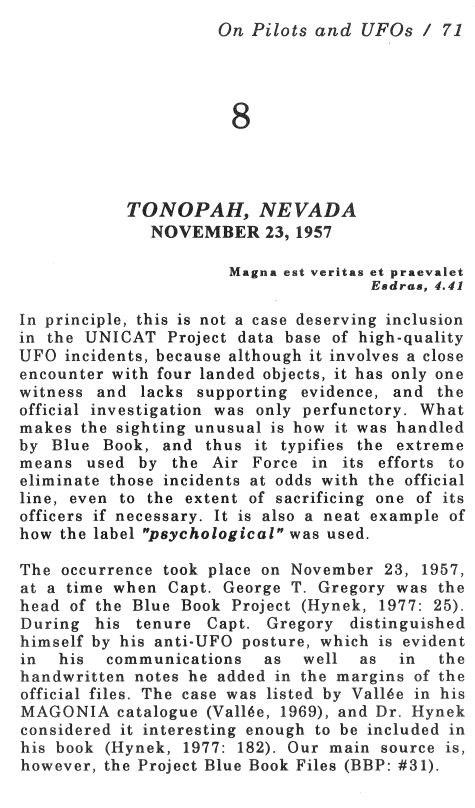
A high resolution copy of the US Air Force’s Project Blue Book 84 page file on this incident can be found on the Fold3 website at the link below:
www.fold3.com...
Here is the summary record card for this incident:
www.fold3.com...
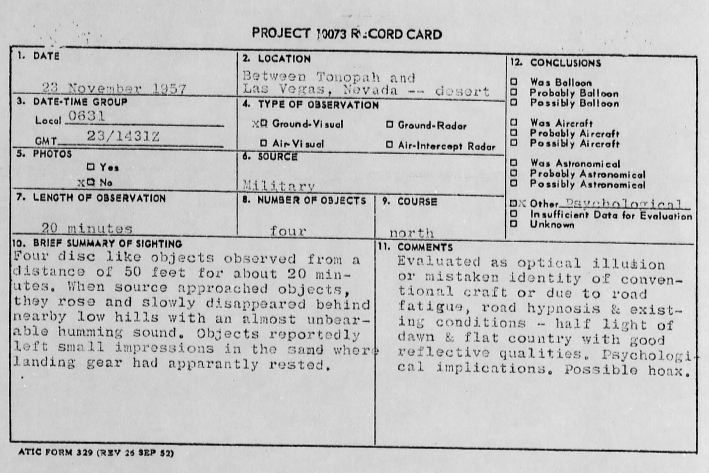
In relation to the possibility that this was a hoax, see this document:
www.fold3.com...
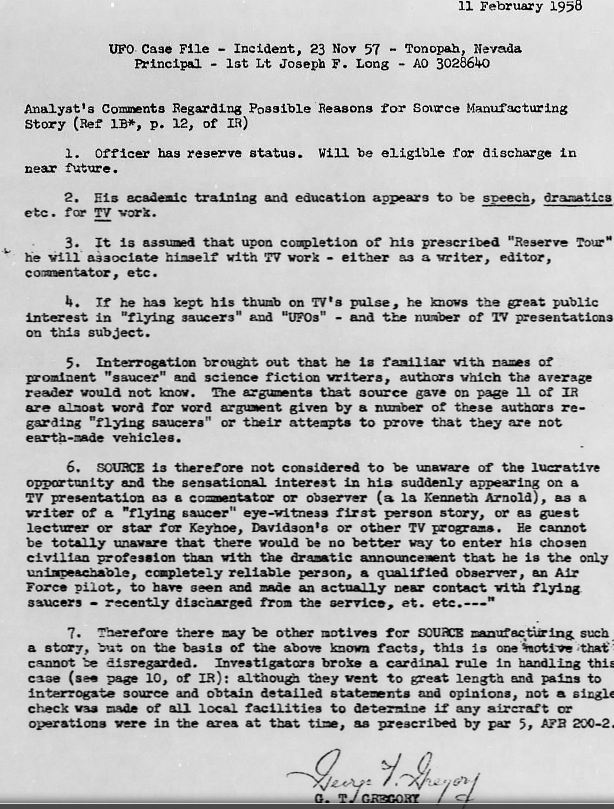
edit on 1-3-2012 by IsaacKoi because: (no reason given)
Chapter 9: Over Pennsylvania (Captain Killian’s case), 24 February 1959
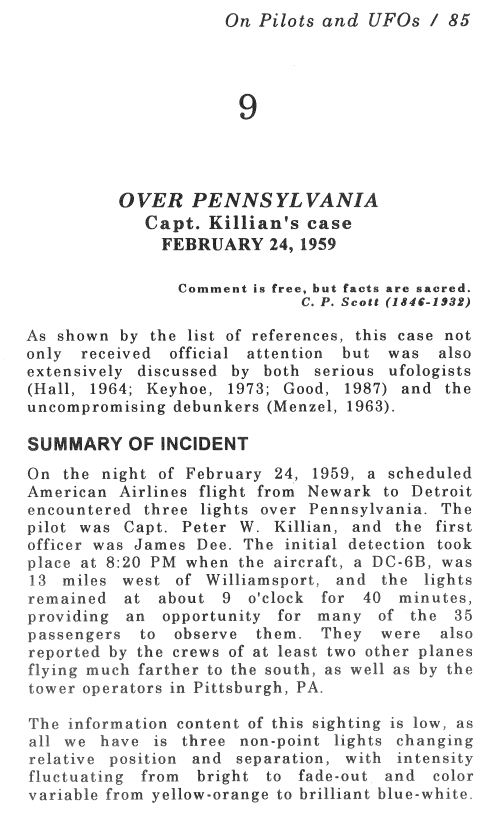
A high resolution copy of the US Air Force’s Project Blue Book file on this incident can be found on the Fold3 website at the link below:
www.fold3.com...
Here is the summary record card for this incident:
www.fold3.com...
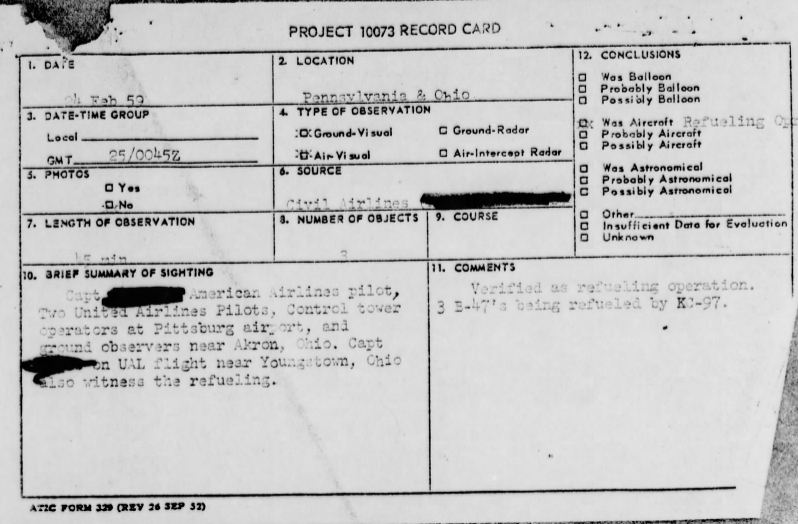
The file contains quite a few clippings, in addition to other documents, including this one:
www.fold3.com...
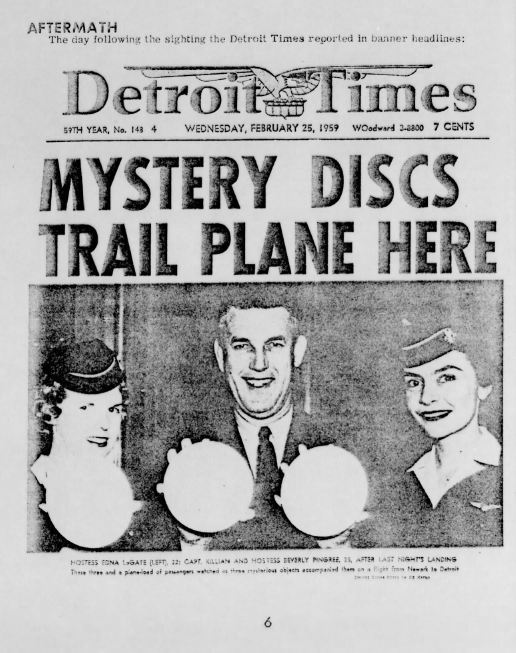
and this one:
www.fold3.com...
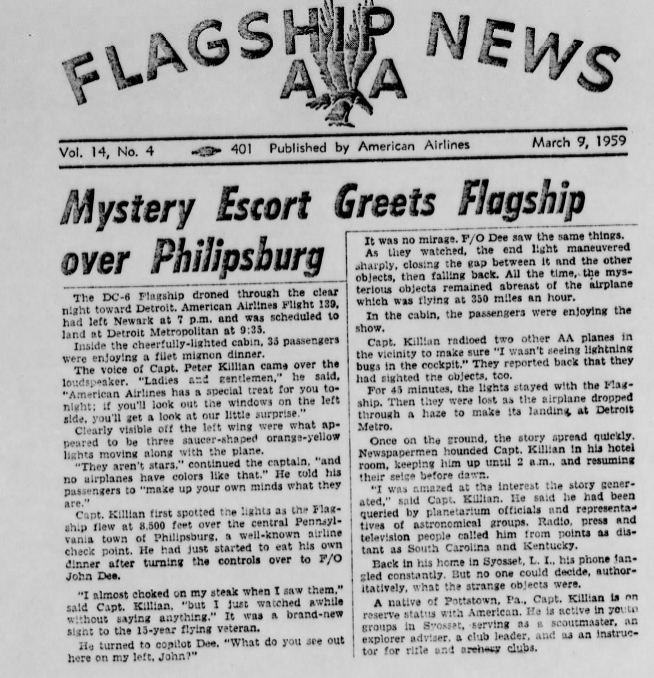
edit on 1-3-2012 by IsaacKoi because: (no reason given)
Chapter 10: Valencia, Spain, 26 September 1973
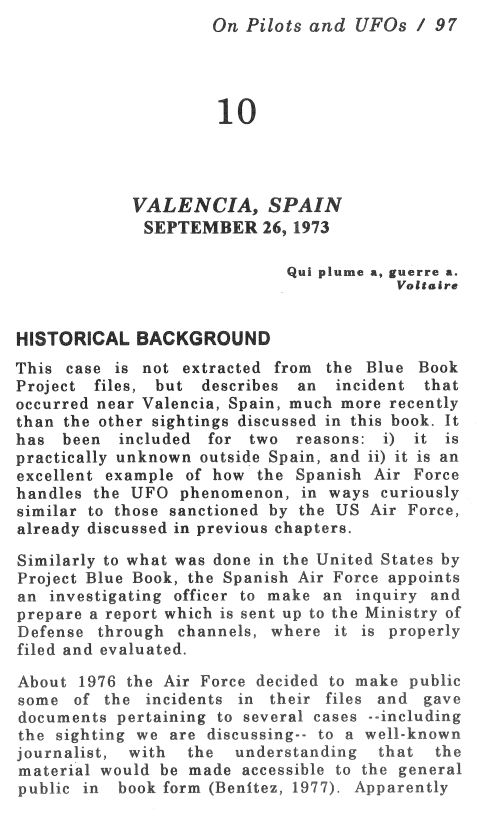
In Chapter 10, Willy Smith disagrees in fairly strong terms with the conclusion reached by a Spanish ufologist whom I respect, Vicente-Juan Ballester Olmos, that the sighting near Valencia on 26 September 1973 was produced by Venus. An analysis by Vicente-Juan Ballester Olmos can be found at the link below:
nicap.org...
Conclusion
I wrote this thread merely to highlight the fact that Willy Smith’s book is now available (free) online at the link below, due to his widow (Terry Long – whom I would like to thank) generously allowing me to scan the book and upload it to the Internet:
min.us...
This thread therefore does not aim to discuss issues in relation to sightings by pilots generally. I wrote about some of the issues relating to sightings by pilots a while ago in an item on my draft website at:
www.isaackoi.com...
In relation to sightings by pilots more generally, I’ll just briefly give links to the following resources:
(a) Karl12’s thread : Eighty Years of Pilot UFO sightings
(b) The website of NARCAP, i.e. the National Aviation Reporting Center on Anomalous Phenomena), which was founded to “to establish a completely confidential reporting center for pilots, radar operators, and air traffic controllers using a toll-free phone number and by other means”.
(c) An episode of The History Channel’s “UFO Files” series entitled “Black Box UFO Secrets” (first broadcast on 7 August 2006):
I totally just printed this out and am going to read it at work today! Thank you so much, I'm so excited to read this!
I find testimonies from pilots to be the most crucial/truthful UFO sightings, and they're always interesting!
All the best,
OnewithAll
I find testimonies from pilots to be the most crucial/truthful UFO sightings, and they're always interesting!
All the best,
OnewithAll
Originally posted by onewithall
Thank you so much, I'm so excited to read this!
Thanks for your comment.
Just to make sure everyone caught the link to download the full (free) book online (in PDF format), the relevant link is:
min.us...
edit on 1-3-2012 by IsaacKoi because: (no reason given)
Really good job on this thread. I'll be back to add more, just bookmarking my place until I read everything you've laid out.
Again good work on getting all this info in one spot.
ETA: Star for you sir, I cannot flag yet but soon.
Again good work on getting all this info in one spot.
ETA: Star for you sir, I cannot flag yet but soon.
edit on 03/12/2010 by Jackasszilla because: See above.
Some of the most idiotic people I met concerning UFO or alien stuff has been pilots. The fact that folks give then a pass when it comes to sightings
makes me puke. Try a 4 way stop and tell me the guy driving the car your are is is not at fault..ol
Posted Via ATS Mobile: m.abovetopsecret.com
Some of the most idiotic people I met concerning UFO or alien stuff has been pilots. The fact that folks give then a pass when it comes to sightings
makes me puke. Try a 4 way stop and tell me the guy driving the car your are is is not at fault..ol
Posted Via ATS Mobile: m.abovetopsecret.com
Originally posted by MainLineThis
Some of the most idiotic people I met concerning UFO or alien stuff has been pilots.
I'm not sure what you mean here. Are you referring to:
(a) misperceptions/misidentifications by pilots, or
(b) their views about UFOs seen by others, or
(c) both of the above;
(d) none of the above.
Originally posted by MainLineThis
The fact that folks give then a pass when it comes to sightings makes me puke.
I'm not sure who you see giving pilots "a pass when it comes to sightings".
Not me, that's for sure - as you'd know if you've read my item on "credible witnesses" at the link I mentioned in my OP.
edit on 1-3-2012 by IsaacKoi because: (no reason given)
Originally posted by EasyPleaseMe
Excellent stuff!
Thanks for the kind words.
The min.us link doesnt work however
Strange. It works for me.
Can any else reading this post check the relevant min.us link to the download of the book, which I'll repeat below, and let me know if the link works for them?
minus.com...
new topics
-
Paradox of Progress
Ancient & Lost Civilizations: 4 hours ago -
Joe Biden gives the USA's Highest Civilian Honor Award to Hillary Clinton and George Soros.
US Political Madness: 7 hours ago -
Winter Storm
Fragile Earth: 7 hours ago -
Biden Face Planted Somewhere
Politicians & People: 9 hours ago -
A great artist and storyteller, for kids of all ages
General Entertainment: 10 hours ago
top topics
-
Joe Biden gives the USA's Highest Civilian Honor Award to Hillary Clinton and George Soros.
US Political Madness: 7 hours ago, 13 flags -
What Is 'Quad Demic'? Mask Mandate Returns In These US States
Diseases and Pandemics: 14 hours ago, 11 flags -
Volcano Watch 2025
Fragile Earth: 16 hours ago, 8 flags -
The Future of fashion .
Social Issues and Civil Unrest: 14 hours ago, 8 flags -
Winter Storm
Fragile Earth: 7 hours ago, 7 flags -
Bin Cyber Junk…
Short Stories: 15 hours ago, 6 flags -
Biden Face Planted Somewhere
Politicians & People: 9 hours ago, 5 flags -
A great artist and storyteller, for kids of all ages
General Entertainment: 10 hours ago, 5 flags -
Paradox of Progress
Ancient & Lost Civilizations: 4 hours ago, 5 flags -
The Undertones - Teenage Kicks
Music: 16 hours ago, 3 flags
active topics
-
Post A Funny (T&C Friendly) Pic Part IV: The LOL awakens!
General Chit Chat • 7988 • : KrustyKrab -
Winter Storm
Fragile Earth • 18 • : RickyD -
What Is 'Quad Demic'? Mask Mandate Returns In These US States
Diseases and Pandemics • 29 • : TheRickestRick -
Paradox of Progress
Ancient & Lost Civilizations • 3 • : BingoMcGoof -
Here we again... CHINA having mass outbreak of something
Diseases and Pandemics • 24 • : NoCorruptionAllowed -
A great artist and storyteller, for kids of all ages
General Entertainment • 1 • : angelchemuel -
-@TH3WH17ERABB17- -Q- ---TIME TO SHOW THE WORLD--- -Part- --44--
Dissecting Disinformation • 3931 • : RelSciHistItSufi -
Joe Biden gives the USA's Highest Civilian Honor Award to Hillary Clinton and George Soros.
US Political Madness • 29 • : caterpillage -
NJ Drones tied to Tesla explosion at Trump Las vegas
General Conspiracies • 45 • : glen200376 -
New Jersey-Teachers Can Now Be Certified Without Passing Basic Reading Writing Math Testing
Education and Media • 14 • : boatguy12
